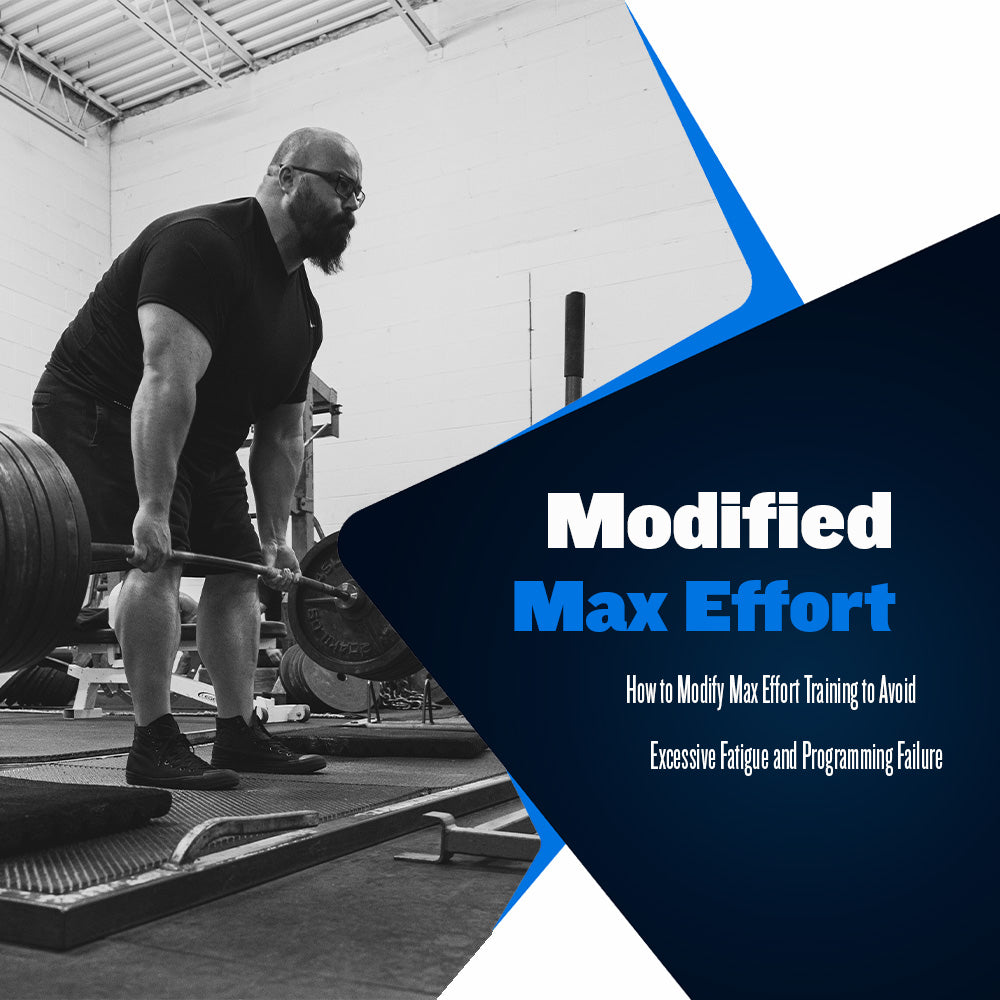Modified Max Effort

Max effort training is a cornerstone of the Conjugate Method. To improve all other aspects of strength, you must first develop the most critical strength; your absolute strength. At Westside, we understand we must raise absolute strength to make meaningful changes in a powerlifter or athletes' strengths or abilities
It is something Lou would talk about frequently, the weakness that many lifters and athletes carry. Instead of focusing on improving absolute strength, many individuals focus on exercises associated with explosive power, hypertrophy, or endurance development.
While size, speed, explosive power, and endurance are certainly needed in sport, all of these strengths are capped to a degree without a high level of absolute strength.
Think of a video game where you must raise the character's primary attribute to increase the capacity of other attributes. That is the way absolute strength development affects athletic development. Improvements in absolute strength improve musculoskeletal control, speed, explosive power, and durability.
Traditional max effort work calls for the trainee to perform a one-rep max effort lift. We do this because it allows the motor unit recruitment needed to have the most significant effect on absolute strength.
A one-rep max effort exercise will always be more effective than other rep schemes regarding motor unit recruitment and impact on absolute strength gains. It is a game of input/output, so the heavier the weight, the greater the motor unit recruitment.
However, this is not the only way to program a max effort training day.
What Is Modified Max Effort?
I have had the opportunity to work with lifters and athletes of all levels. Whether due to current recovery levels, changing training schedules, or increased work demands leading to added fatigue while training, not everyone can recover from all-out max effort training days every week.
About 14 years ago, my schedule limited my ability to get adequate sleep, eat meals on time, or follow a training schedule that allowed for proper recovery times between workouts.
I began using what I called "Modified Max Effort" which is really just the use of top sets of three or five in place of an all-out max effort lift.
The motor unit recruitment associated with lifts near or above 100% of your one-rep max will always foster the most significant recruitment of motor units. However, with modified max effort, you are still recruiting motor units that will influence improvements in absolute strength while avoiding the recovery timelines and demands associated with all-out max effort training.
Instead of achieving maximal motor unit recruitment by performing a lift at 100%, the main exercise is performed for three or five rep top sets that still reach suitable motor unit recruitment levels.
Essentially, we are losing the ability to achieve the highest level of motor unit recruitment with the reduction in intensity. Still, we are gaining a meaningful boost in recovery and decreasing the likelihood of programming failure or injury in the future.
Modified max-effort allows a lifter struggling with recovery to be afforded the benefits of high-intensity weight training while reducing the overall impact on recovery associated with an all-out max effort lift.
How to Program Modified Max Effort
If you are familiar with programming a traditional Conjugate Method training plan, it should be no challenge to understand how to implement modified max effort into your training plan.
The first thing you need to do is figure out if you need to use modified max effort in the first place. Are you able to train on a set schedule, maintain adequate hydration and nutrition levels, and get optimal sleep on a nightly basis? Stick to regular max effort; you'll benefit more.
However, if you are brand new to Conjugate training or your day-to-day life disrupts your schedule, food intake, water intake, and sleep, it is probably reasonable to throw some modified max-effort programming into your training plan.
Here's what a month's worth of modified max-effort lower training would look like:
Week 1: Giant Cambered Bar Squat, work up to a top set single.
Week 2: SSB Goodmornings, work up to a top set of five reps.
Week 3: Box Squat, work up to a top set single.
Week 4: Mat Deadlift, work up to a top set of three reps.
This is just one of many ways you can include modified max effort training into your Conjugate Method programming.
Use Discernment
When programming for yourself or others, you must take into account life circumstances. Ultimately, success in the gym is decided by how much discipline a trainee displays outside of the gym.
Unfortunately, no matter how disciplined you are, we all run into scheduling issues and limited free time at some point in life.
These are the times when modified max effort will benefit you. Modified max-effort aims to supply the lifter with adequate stimulus while reducing the overall intensity experienced to improve overall recovery.
However, it would be best to focus on accomplishing as many successful one rep max effort training days as possible. These days will always be the most effective, most beneficial training days and should only be modified out of necessity, not laziness.
If you can train all-out max effort regularly, do it. If not, Modified Max Effort is the next best thing.
Sources:
Simmons, L. (2007). Westside Barbell Book of Methods. Westside Barbell.
Verkhoshansky, Y., & Siff, M. C. (2009). Supertraining. Verkhoshansky.





